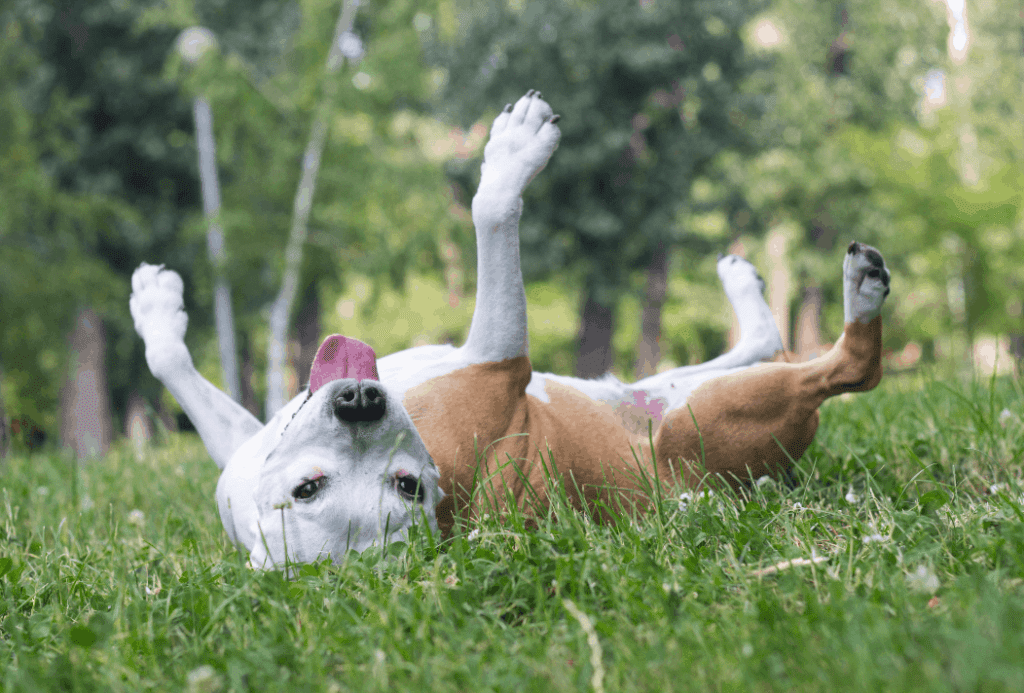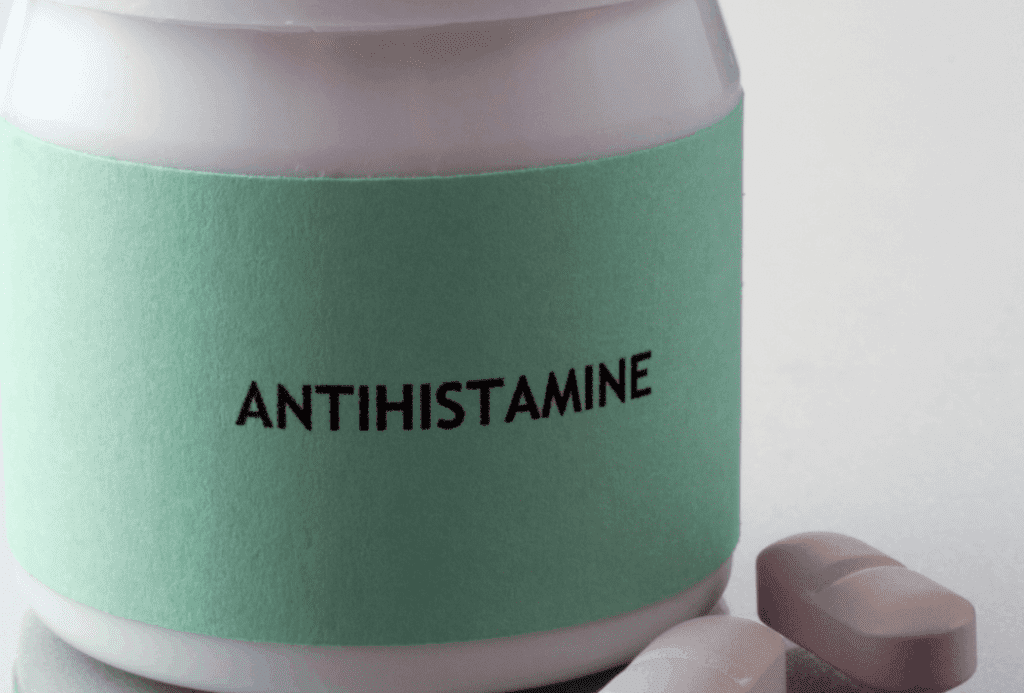Is my Dog Having an Allergic Reaction?
Allergic reactions are fairly common in dogs! It can be very scary to see your dog may be having an allergic reaction and often we don’t ever figure out what the true culprit was.
In this article, we’ll discuss what an allergic reaction looks like, some common causes of allergic reaction in dogs, and what you can do for your dog if you think they are having an allergic reaction.
How do you know if your dog is having an allergic reaction?
If your dog is having an allergic reaction, they will typically develop one or more of these symptoms:
- Hives
- Itchiness
- Swelling of the face, eyes, or mouth
- Raspy breathing
- Coughing
- Excessive tearing/reddened eyes
- Vomiting
- Diarrhea

It may be difficult to tell if your dog has developed hives. Hives are typically raised reddened skin lesions. You can try looking at the parts of their body with minimal fur, such as on their abdomen or in their inguinal region. You may also notice that when they have hives, their fur tends to stand out in odd, patchy patterns due to the raised skin lesions. If you firmly and slowly rub your hands across their body, you may also feel the hives.
What can cause an allergic reaction in dogs
An allergic reaction can be caused by a variety of things, as a dog can be sensitive to or allergic to anything. It can be due to things they have eaten, things they have come into contact with, or things they have inhaled.

Here is a list of the most common causes of allergic reactions in dogs:
- Vaccines
- Medications (even ones prescribed to them)
- Bee stings
- Wasp stings
- Spider bites
- Human foods (most commonly nuts)
Allergic reactions to vaccines
If your dog has had a vaccine within the past 24-48 hours and begins developing any of the symptoms of an allergic reaction, call your veterinarian immediately and let them know what is going on. However, if your dog develops signs of an allergic reaction and it has been more than two days since their vaccination, it is unlikely that the allergic reaction is due to the vaccine, and more likely it is due to one of these other causes.

Allergic reactions to new medication
If your dog has been put on a new medication and develops signs of an allergic reaction, call your veterinarian and let them know what is going on for further recommendations on what to do.
What should I do if my dog is having an allergic reaction?
Consider whether your dog has been recently vaccinated
If your dog was vaccinated within the past 24-48 hours, your veterinarian will likely want you to take your dog into their office right away so they can check them over and see if their symptoms are serious enough to need an injection of a steroid and/or anti-histamine.
Call your veterinarian
If your dog is having an allergic reaction, the first thing you should do is call your veterinarian. They can then direct you on whether you should immediately take your dog into them, or give instructions on things you can do at home. Sometime this will depend on the severity of their symptoms, such as if they just have a few hives or if their face is swollen.
Give your dog a dose of antihistamine
If you are unable to call your veterinarian or take them into your veterinarian’s office, the main thing you can do at home is give them a dose of an antihistamine, such as Benadryl. Benadryl is a fairly safe medication and is probably the safest of the antihistamines to give to your dog.
PLEASE NOTE: It is very important to make sure you only give regular Benadryl and NOT Benadryl-D. If you give Benadryl-D to your dog, it can cause toxicity and make them very sick. Do not give your dog anything with a decongestant in it. The “D” in Benadryl-D implies “decongestant”.
The dose of Benadryl to give to your dog is essentially 1mg per pound of weight. Benadryl typically comes in 25mg tablets or capsules. You can give this dose of Benadryl up to every 8-12 hours until you can get them into your veterinarian’s office.

How much Benadryl can I give my dog?
You can follow this dosing chart for Benadryl below:
| Weight of Dog | 25mg Benadryl Tablet(s) to Give |
| <15 pounds | ½ tablet |
| 15-40 pounds | 1 tablet |
| 40-60 pounds | 2 tablets |
| 60-90 pounds | 3 tablets |
Allergic reactions in dogs often come and go very quickly! It is important to note, however, that some allergic reactions don’t just involve the skin, but can also involve the lungs and intestines. It’s not always easy to know if your dog is having trouble breathing, and if their intestines are impacted, they can become dehydrated very fast.
Moral of the story: even if your dog’s allergic reaction just looks like some harmless hives, always have your dog evaluated by their veterinarian as soon as possible!
The post Is my Dog Having an Allergic Reaction? appeared first on VetBabble.




Post a Comment